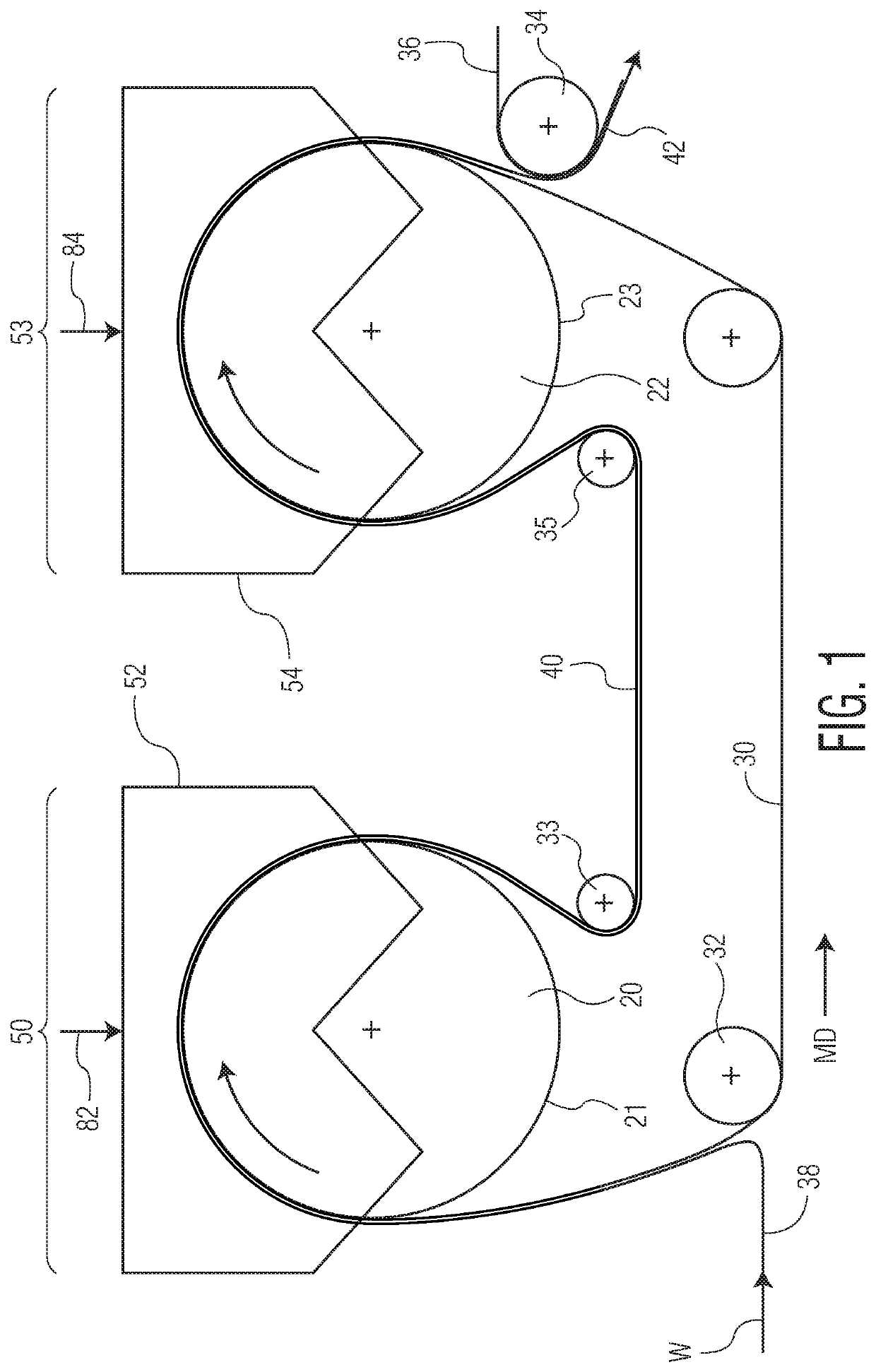Through-air drying apparatus and methods of manufacture
a technology of through-air drying and manufacturing methods, which is applied in drying machines, lighting and heating apparatus, drying machines with progressive movements, etc., can solve the problems of limiting the possibility of over-drying the web or exceeding the ignition temperature of the web, and achieves the effect of improving the drying ra
- Summary
- Abstract
- Description
- Claims
- Application Information
AI Technical Summary
Benefits of technology
Problems solved by technology
Method used
Image
Examples
Embodiment Construction
[0029]It has now been discovered that the drying rate may be improved by providing a tissue making machine having two noncompressive dewatering devices, such as two through-air driers, where the supply temperature of each the devices may be separately controlled. The temperature of the air supplied to the first dewatering device may be increased to in excess of 450° F., and in certain instances greater than 500° F., such as from about 475 to about 600° F., such as from 500 to about 575° F. On the other hand the temperature of the air supplied to the second dewatering device is generally less than the temperature of the air supplied to the first. For example, if the temperature of air supplied to the first dewatering device may be increased to in excess of 550° F., the temperature of air supplied to the first dewatering device may range from 400 to 490° F.
[0030]The temperature the drying medium supplied to the first through-air dryer may exceed 450° F. so long as the sheet is only pa...
PUM
 Login to View More
Login to View More Abstract
Description
Claims
Application Information
 Login to View More
Login to View More - R&D
- Intellectual Property
- Life Sciences
- Materials
- Tech Scout
- Unparalleled Data Quality
- Higher Quality Content
- 60% Fewer Hallucinations
Browse by: Latest US Patents, China's latest patents, Technical Efficacy Thesaurus, Application Domain, Technology Topic, Popular Technical Reports.
© 2025 PatSnap. All rights reserved.Legal|Privacy policy|Modern Slavery Act Transparency Statement|Sitemap|About US| Contact US: help@patsnap.com


